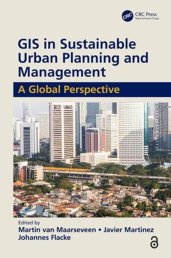This page is part of the Book GIS in Sustainable Urban Planning and Management: a Global Perspective. This book explores and illustrates the use of geo-information in the planning and management of urban regions.
 The overall aim of this book is to contribute to capacity development in using GIS for urban planning and management topics. With this in mind, in some of the chapters (Chapters 7, 10, 13, 15, 18 and 19) we have included exercises that enable readers to reproduce the analysis with QGIS open-source software. We have called these exercises Methodological Demonstrations because the focus is not to replicate results but to understand how the methods used in the chapters can be applied using open-source software tools.
The overall aim of this book is to contribute to capacity development in using GIS for urban planning and management topics. With this in mind, in some of the chapters (Chapters 7, 10, 13, 15, 18 and 19) we have included exercises that enable readers to reproduce the analysis with QGIS open-source software. We have called these exercises Methodological Demonstrations because the focus is not to replicate results but to understand how the methods used in the chapters can be applied using open-source software tools.
Exercises
The datasets that accompany each of these methodological demonstrations are the same as those used by the chapter’s authors in order to emphasize the link between the rationale as it is explained in the chapter and the actual GIS operations that have to be performed. In this effort, we tried to adapt chapters that focus on different types of spatial analysis: qualitative GIS in the case of Enschede; mapping citizens’ perceptions in the cases of Christchurch and Nicosia; exploring crowdsourced data in the case of Jakarta; multi criteria analysis for transit accessibility in Arnhem and Nijmegen; and disaster risk assessment in Kigali.
We encourage you to use this educational material. If you find any issue or inconsitency, or if you would like to have us visiting your institution as guest lecturers, please let us know by contacting André Mano.

